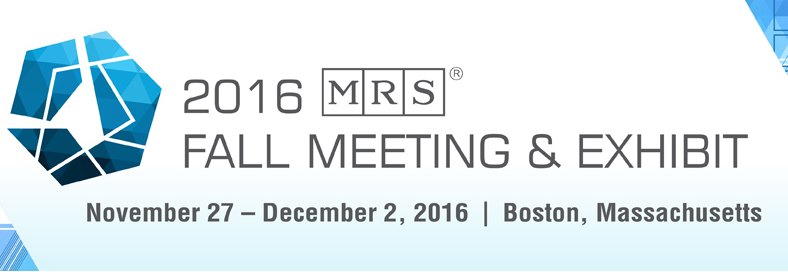We will be presenting work on a new approach to scaling down assembly of micro-electronic components on flexible substrates at the Materials Research Society (MRS) conference in Boston.
It would be a pleasure to talk with you if you attend.
9:45 AM – BM4.5.05
Template-Free Photoanchoring of Micro-Scale Objects for Manufacturing of Ultra-Miniature Electronic Devices
C. Ryan Oliver , Lillian Chin , David Dellal , Nathan Spielberg , John Lewandowski , A. John Hart
The availability of higher performance microprocessors, communication chips, and inertial sensors with ever smaller dimensions has driven the miniaturization of passive IC components as well as the development of high-throughput surface mount assembly technology. Currently, circuit boards using these components are assembled by mechanical pick and place operations. Further decreases in component size require mutual advances in pick-and-place machine dynamic, component mounting and placement on supply tapes, and micro-scale gripping. Fluidic assembly provides an alternative scalable route to placement of micro-scale objects; however, the requirement for complementary chemistry and/or shape-driven interaction establishes constraints on the process for assembling arbitrary patterns. For these reasons, a flexible process for high-throughput placement of components that overcomes the constraints of pick-and-place assembly is needed.
We present a hybrid manufacturing process for printed electronics, involving inkjet printing of thin-film conductors combined with template-free photo-anchoring of micro-components provided in a continuous flow. To enable template-free anchoring, it was necessary to build the hardware and software that enables real-time imaging of the flow of components over the substrate, image processing, and photopatterning via maskless projection. By this method, software-defined specifications can be used to specify the object placement locations, including for example, the relative positions of each object, dynamic reference points on the substrate (e.g., printed traces where the objects should be placed), selection rules (e.g., object size, orientation, color), and positional tolerances for anchoring. The rate and accuracy of the dynamic anchoring process are studied using polymer beads, and a model is developed to calculate the areal throughput versus the pattern design and image processing performance. Printing accuracies of three pixels (10 ?m) on average are demonstrated for beads ranging from 5 to 90 ?m. Last, we demonstrate the fabrication of flexible LED arrays, by first inkjet printing Ag antennas on a flexible paper substrate, and subsequently photoanchoring micro-LEDs.
We present a hybrid manufacturing process for printed electronics, involving inkjet printing of thin-film conductors combined with template-free photo-anchoring of micro-components provided in a continuous flow. To enable template-free anchoring, it was necessary to build the hardware and software that enables real-time imaging of the flow of components over the substrate, image processing, and photopatterning via maskless projection. By this method, software-defined specifications can be used to specify the object placement locations, including for example, the relative positions of each object, dynamic reference points on the substrate (e.g., printed traces where the objects should be placed), selection rules (e.g., object size, orientation, color), and positional tolerances for anchoring. The rate and accuracy of the dynamic anchoring process are studied using polymer beads, and a model is developed to calculate the areal throughput versus the pattern design and image processing performance. Printing accuracies of three pixels (10 ?m) on average are demonstrated for beads ranging from 5 to 90 ?m. Last, we demonstrate the fabrication of flexible LED arrays, by first inkjet printing Ag antennas on a flexible paper substrate, and subsequently photoanchoring micro-LEDs.






